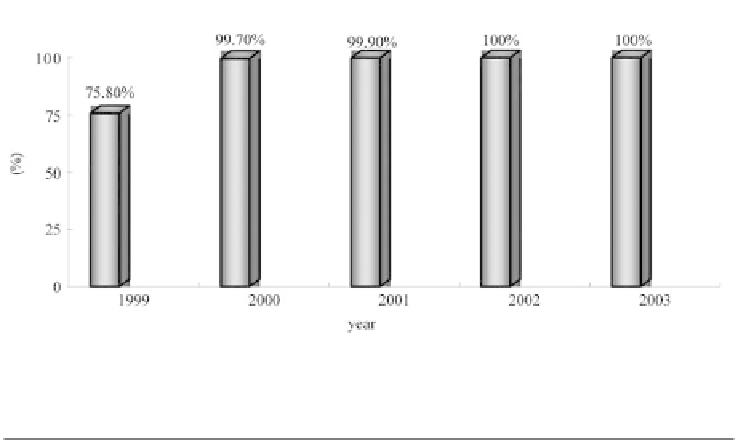Environmental Engineering Reference
In-Depth Information
and resources. The benefits of a zero waste policy are that it reduces operation costs,
increases profit and complies with environmental regulations. The CSC continuously
creates new technology to reduce waste or transfer it into useful resources through
continuous improvement in the manufacturing process, consistently moving towards
a zero waste system. With the improvements in technology and investment in the R
& D Department over the past two decades, CSC has accomplished its missions and
goals gradually.
Its performance in reducing residues and recycling will be shown in the Table 4
and Figure 7.
Figure 7.
Percent of sludge recycled at CSC since 1999 [42].
Table 4.
By-products of process residues in 2004 [44].
Generation
(10,000 tons)
%oftotal
residues
Type of residue
Description
BF slag
By-products of BF after smelting or raw materials
303.9
49.0
BOF slag
By-products of the basic oxygen furnace (BOF) after refming of steel
128.2
20.6
De-S slag
By-products of the hot metal desulfurizing process
36.8
5.9
Dust
Particulates collected from de-dusting system
34.1
5.5
Sludge
Solid cakes or mud from wastewater treatment after condensing and
dehydrating
44.8
7.2
Mill scale
Rust of steel products or semi-products
29.4
4.7
Spent refractory
Used refractory from high temperature process
4.0
0.6
Civil refractory
Residual soil, concrete, etc.
19.8
3.2
Limestone cake
Filter cake from limestone washing water
5.0
0.8
Other
Waste oil, waste packaging materials, refuse, etc.
15.5
2.5
Total
621.5
100



















Search WWH ::

Custom Search